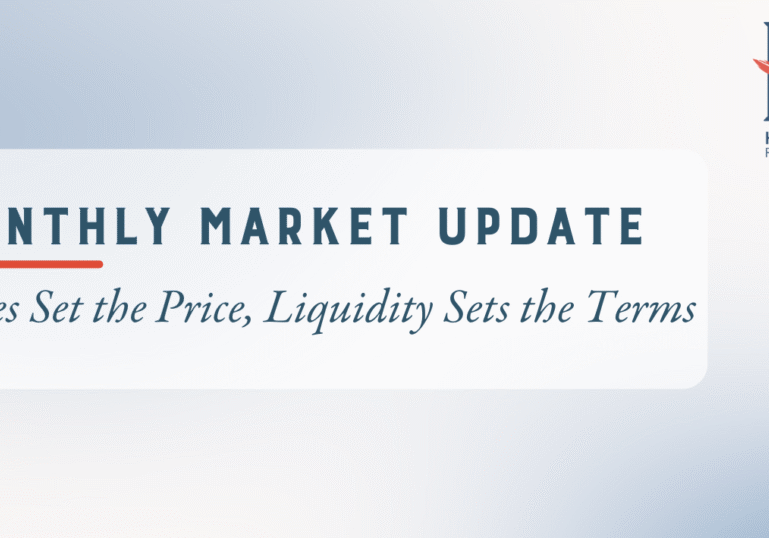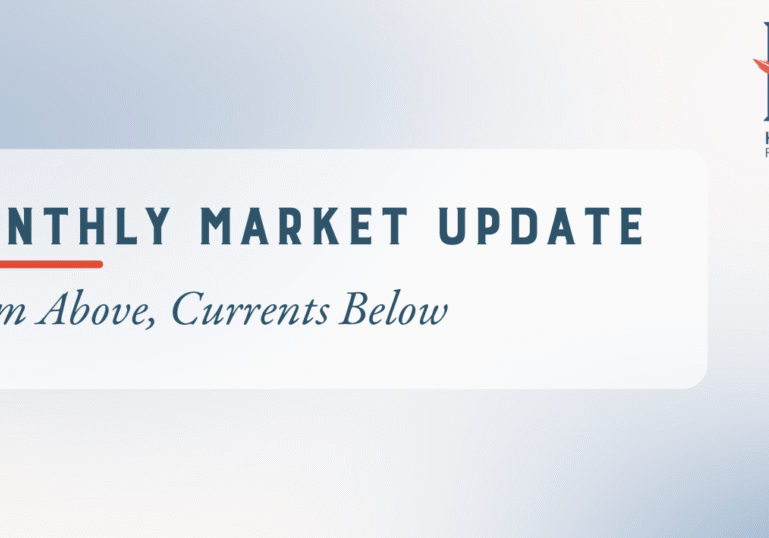Key Observations
- Markets Advance in June – Despite geopolitical tensions and mixed policy signals, stocks powered higher with technology and industrials leading performance while small caps lagged.
- International Leads the Year – Robust local performance and a weakening U.S. dollar has buoyed returns in markets abroad.
- When Uncertainty is High, Context is Grounding – Recent price moves may cause investors concern, but additional context may provide perspective on the weaker U.S. dollar and rising oil prices in June.
- Big Bill, Big Deficit – According to the Congressional Budget Office, the “Big Beautiful Bill” will increase the deficit by more than $2 trillion over the next ten years1. Expanding fiscal spending in a growing economy raises questions about long-term debt sustainability and funding sensitivity.
Market Recap
Markets gained ground in June, extending the year’s mostly positive performance despite geopolitical uncertainty and evolving policy signals. Volatility surfaced briefly following Middle East tensions, but sentiment stabilized quickly and showed evidence of investor resilience in the face of ongoing global uncertainty.
Investor muscle-memory kicked in, and, once again, technology stocks, and AI-centric constituents of the “Magnificent Seven,” ticked higher. The sector climbed an impressive +9.8%, once again making it the biggest gainer for the month. On the other hand, industrial stocks have quietly emerged as a top-performing sector this year, up +12.7%. That strength appears tied to investor optimism around pro-manufacturing policy goals from the current administration. Small caps struggled during the first half of the year with the biotech sector declining on anticipated scrutiny from U.S. policy and inflationary pressures.
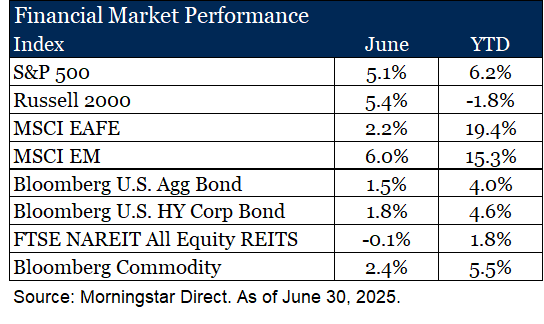
The S&P 500 outpaced the MSCI EAFE by +2.9% and lagged the MSCI EM by -0.9% for the month. Year-to-date, international exposures remain ahead, supported by robust local market performance and a weaker U.S. dollar, which has enhanced returns.
Treasury yields declined across the curve in June. The 2-year yield ended the month at 3.7%, as markets priced in a higher likelihood of near-term Fed easing in response to softer growth data and a weaker-than-expected inflation data. Credit spreads also tightened, supported by steady demand and a favorable risk backdrop despite mixed economic signals.
Commodity prices advanced in June, with gains across energy and metals offsetting weakness in grains and soft commodities. Oil and natural gas rose early in the month on heightened tensions in the Middle East, though prices moderated later while ultimately finishing higher.
REIT returns were down in June, with notable divergence across property types. Office and lodging/resort sectors led performance, benefitting from a modest rebound in demand and relative value interest. In contrast, data centers, self-storage, and single-family rental REITs underperformed, reflecting concerns around elevated valuations and sensitivity to shifting growth expectations.
When Uncertainty is High, Context is Grounding
In a market environment that often reacts faster than it reflects, uncertainty is an almost constant companion. Today, that uncertainty is elevated, and understandably so. Fiscal dynamics are rapidly shifting, inflation is caught between opposing forces, and policy is in flux. It is a time that calls for clarity, not certainty. And when clarity is hard to come by, context becomes our foundation.
Much has been made of recent U.S. dollar weakness and grumblings of the potential for the U.S. losing its reserve currency status. Similarly, with rising tensions in the Middle East, oil has moved upward over the month adding to inflation concerns. At first glance investors may have concern, but with a bit of context that concern may abate.


Source: FactSet, as of June 30, 2025.
If we were to rephrase “U.S. dollar weakens -11% year-to-date” to “U.S. dollar retraces back to 2022 levels, remains over 7% above the 20-year average” it may elicit different levels of concern. Or, if we mention that oil is below average historical levels where inflation was around 2.5%, that may also elicit different levels of concern. Context matters.
BIG BILL, BIG DEFICIT
Treasury markets have long absorbed large issuance volumes, though with recent lack of clarity buyers are asking for more compensation (i.e. higher rates). The context on why brings us to the so-called “Big Beautiful Bill”. As proposed, the U.S. will be expanding its deficit in a non-recessionary environment. Typically, the government tends to spend more in recessionary periods to offset lower consumer spending and cushion the blow. The opposite should hold true in periods where markets are growing. With interest expense over 3% of GDP and no recession in sight this combination is historically rare2. With debt levels elevated and rolling into higher rates, the long-term sustainability of U.S. borrowing is beginning to re-enter investor conversations.
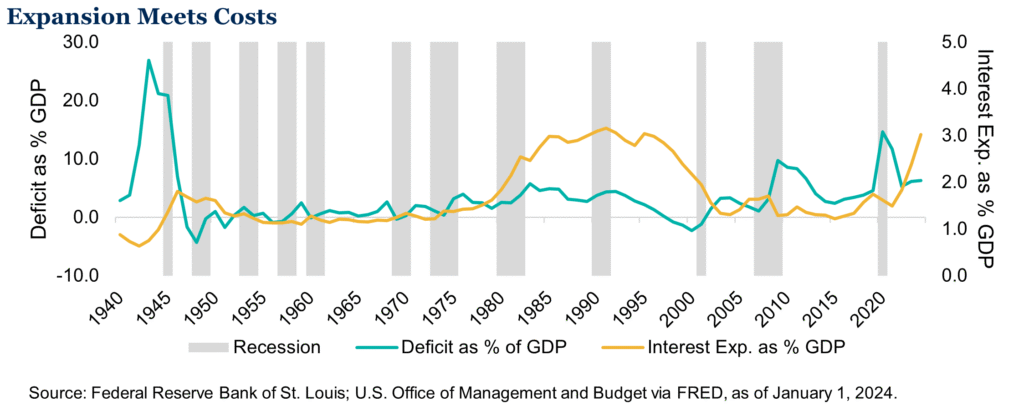
Additionally, investment funds now dominate at Treasury auctions rather than obligated buyers like central banks or dealers. This has the potential to make Treasury markets more sensitive to sentiment and flows which can impact the cost of funding a large deficit. For investors without explicit clarity on the future direction of rates, or, all of us, the long-end of the Treasury market may present as more volatile in this period of uncertainty.
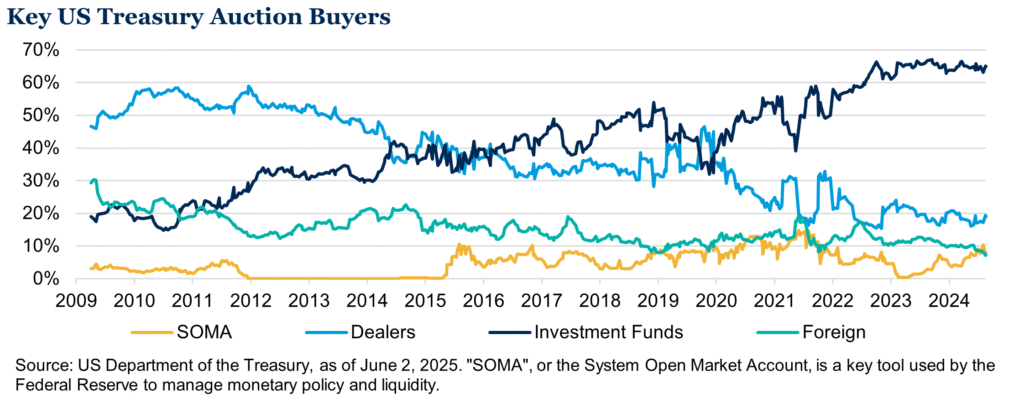
OUTLOOK
The dollar is weakening. The deficit is growing. The curve is steepening. Rates remain elevated. These signals are not pointing in one direction, but they are flashing that the market is uncertain and deeply sensitive to fiscal and monetary decisions.
Our process is not about predicting every market twist, but rather, aligning positioning with the underlying incentives that shape policy, capital flows, and investment behavior. When uncertainty is high, context is grounding. And context today tells us that even with policy rates likely to fall at some point, the path there may not be smooth, especially if the market starts asking harder questions.
Listen and subscribe to our Wealthy Behavior podcast to stay up-to-date on the latest market, economic and investment news that affects your wealth. If you like what you hear, please leave our show a review on Apple Podcasts or Spotify so we can reach more people like you!
1.Congressional Budget Office. H.R. 1, One Big Beautiful Bill Act (Dynamic Estimate).
2.Federal Reserve Bank of St. Louis; U.S. Office of Management and Budget via FRED, as of January 1, 2024.

